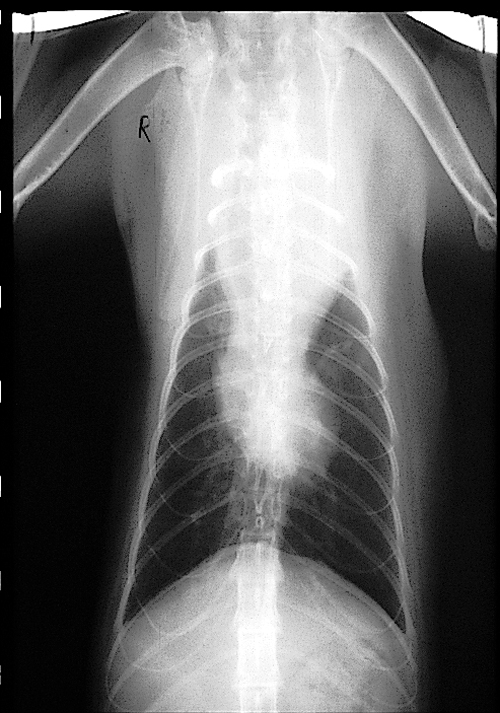Small Animal Emergency and Critical Care Medicine Q&A 04
This two-year-old, castrated male domestic shorthair cat is presented with a 3-week history of progressive dyspnea, anorexia and occasional coughing. He is markedly more distressed today. HR – 160 bpm; RR – 45 bpm; temperature – 102.4°F (39.1°C). The cat has a dysynchrous, ‘choppy’ breathing pattern. On auscultation there are increased bronchovesicular sounds heard bilaterally in the dorsal lung fields, but the cranial lung fields are dull. His anterior thorax is noncompressible.
| Question | Answer | Article | |
| How do you initially stabilize the cat’s condition? | Oxygen supplementation should be initiated. Because the lack of lung sounds in the ventral thorax is consistent with pleural fluid, thoracocentesis is indicated. If a mediastinal mass is suspected, corticosteroids may improve ventilation by decreasing the mass size and reducing tracheal inflammation at the sight of compression. However, if the cat is stable, corticosteroids and chemotherapy should be withheld until diagnostic cytology has been performed. |
[[|Link to Article]] | |
| A thoracic radiograph is provided postthoracentesis. What is the diagnosis? | A mediastinal mass. |
[[|Link to Article]] | |
| How would you proceed to further characterize this finding? | The differential diagnoses for mediastinal masses in cats include lymphosarcoma (of which 80% occur in FeLV positive cats), thymoma, thyroid adenocarcinoma, abscess and granuloma. Additional diagnostic approaches would include pleural fluid analysis, FeLV test and a fine-needle aspirate or ultrasound-guided biopsy of the mass. Consider a coagulation profile before biopsy. |
[[|Link to Article]] | |
